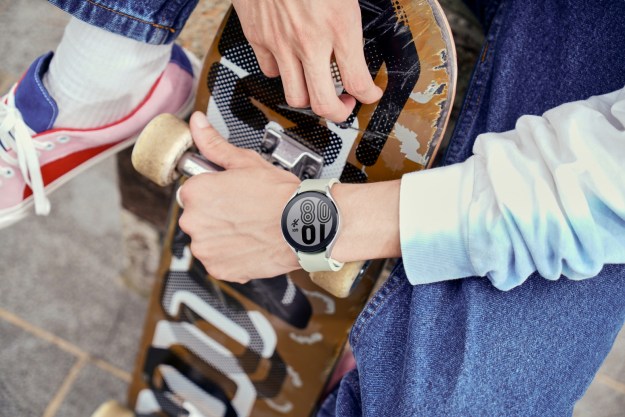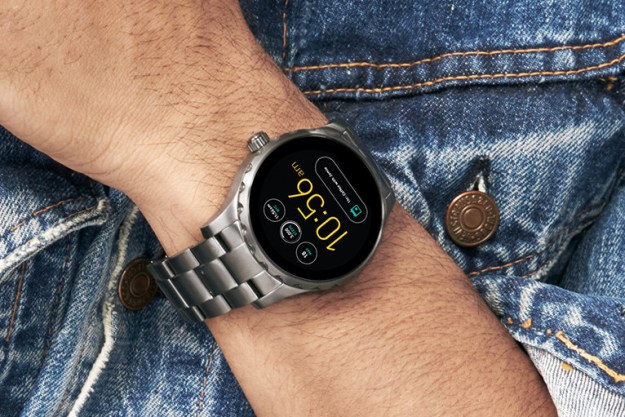
The big, doom and gloom number from that led us to this conclusion was 720,000 — that’s the sobering number of Android Wear devices that were shipped in the whole of the year, according to a new Canalys study.
But then there’s this number: 10 million. That’s how many “basic” smart bands shipped during the same period. You know, fitness trackers. Another study, published back in May, found that the Fitbit alone made up close to 50 percent of wearable bands shipped in the first quarter of last year. Add in fellow “basic” bands from companies like Jawbone and Chinese manufacturer Xiaomi, and you’ve got a pretty good idea of who’s doing the heavy lifting here.
But will basic bands stick around if smartwatches take off?
The everyman’s wearable
In the war of the wearables, the basic band was the first front. As pundits questioned whether smartwatches would ever prove a success with mainstream audiences, fitness bands quietly infiltrated our lives. Before we were any the wiser, even friends and family members who were traditionally a few generations behind the tech curve had colorful silicone bands strapped to their wrists.
A Fitbit is a heck of a lot cheaper and less absurd than installing a standing desk, right?
Heck, I found myself in the cereal aisle of my local supermarket, and spotted giveaways on the front of several different “healthy” brands. Once you’ve made it to a cereal box, you’re officially a part of the mainstream, right?
How did fitness bands get so big, so fast? Price has certainly played a factor. Often priced no higher than $200, there’s not nearly as much to lose by hopping on the fitness band train early. And then there’s the whole fitness bit. Thrift stores are littered with all manner of exercise devices, from the Thighmaster to the Bowflex. I bought one of those instant pull-up bars that I used until I was convinced that it wasn’t good for the foundation of my pre-war apartment building.
Add in study after study showing that sitting all day is worse than smoking, eating donuts and obesity, and you’ve got a perfect storm. And hey, a Fitbit is a heck of a lot cheaper and less absurd than installing a standing desk, right?
How far can they run?
One more Canalys study and I’m done. Seriously. Back in September, the notably bullish research firm predicted a 129-percent jump in wearable shipments for 2015. What’s most interesting, however, that if those numbers are to be trusted, so-called basic bands will only make up roughly a third of the total 43.2 million shipments. As mentioned earlier, the firm — like so many others — is expecting really big things from that Apple Watch.
Simply put, “Apple will be the biggest driver behind wearable band shipments in 2015.”
Basic bands are expected to grow in that timeframe, but will only be a small fraction of the total, being handily bypassed by smart devices like the Apple Watch and various Android Wear bands. Again, this pure speculation, but I think there’s something there, at least so far as the relative stagnation of basic bands is concern.
For starters, any growth of smart watches will almost certainly eat into basic band numbers. Multiple wearables on your wrist is really not a good look. Trust me, I walked around that way for a couple of months — for testing purposes only, I swear.

A study I alluded to earlier is even more damning, this one from our friends at the American Medical Association. It put fitness bands up against smartphones for basic physical activity tracking and found that, lo and behold, the results were basically the same.
Your smartphone is a wonder of modern consumer electronics. It’s got accelerometers and GPS and all sorts of wonderful tracking hardware built-in (for better or worse). At the end of the day, it turns out that a smartphone running an app, kept in a pants pocket, does more or less as good a job gauging psychical activity as a fitness band.
I suspect the big fitness-band makers were really just waiting for a study like this to hit the wire. It was only a matter of time before we all discovered their deep, dark secret. I’m sure if a representative from one of those companies were here right now, they’d counter with something about the inherent motivation of such devices. And it’s true — the gamification drives us to compete against ourselves and others.
What have you done for me lately?
If smartwatches are going mainstream, the question is what, if anything, basic bands can offer that their more advanced brethren can’t. Certainly such motivators can be easily built into those devices.
It’s pretty easy to see the reign of the $200 fitness band drawing to an end over the next couple of years.
They’re cheaper, sure. Fitness bands, unlike smartwatches, won’t cost you the same price as an unlocked smartphone, but that’s set to change after the first generation. And besides, if you’re looking to save money, the idea of a free
I think it’s safe to say suggest that sales of basic bands will slow, plateau and eventually fall off. Perhaps that will take a little longer in high-end devices, which are almost smartwatches anyway. But it’s certainly wise for companies like Fitbit and Jawbone to diversify their product offerings now.
It’s still premature to declare fitness bands dead. Certainly they’ll continue to exist as low-cost incentives from health-care providers looking to monitor and promote fitness among users. But it’s pretty easy to see the reign of the $200 fitness band drawing to an end over the next couple of years.
But heck, no one can say they didn’t have a good run.
Editors' Recommendations
- Are smartwatches and fitness trackers making us more anxious?
- Together, Google and Samsung just may have a chance to beat the Apple Watch
- TicWatch 3 Pro is the first Wear OS smartwatch with a Snapdragon Wear 4100 chip


